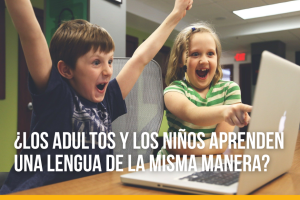Embarking on the journey to learn a new language is an endeavor filled with both excitement and challenges.
For many students, the acquisition of proficiency in Spanish, a language rich in culture and diversity, presents a unique set of obstacles. In this comprehensive exploration, we will delve into the multifaceted challenges students often encounter when learning Spanish and propose strategies to overcome these hurdles.
1 Cultural and Linguistic Differences: One of the primary challenges in learning Spanish lies in the profound cultural and linguistic differences students may encounter. Coming from linguistic backgrounds with little similarity to Spanish, students can find it challenging to adapt to new linguistic structures, sounds, and vocabulary.
Solution: Instructors can enhance cultural immersion by integrating diverse cultural elements into the curriculum. This approach fosters an appreciation for the language and makes the learning process more engaging. Additionally, providing resources that highlight linguistic parallels between the student’s native language and Spanish can serve as a bridge to facilitate comprehension.
2 Ineffective Teaching Methods: The effectiveness of teaching methods significantly influences a student’s ability to grasp a new language. Outdated or inefficient teaching strategies can hinder comprehension and impede language acquisition.
Solution: A modern, dynamic approach to teaching Spanish is essential. Incorporating immersive experiences, language games, and multimedia resources can make the learning process more interactive and enjoyable. Tailoring teaching methods to cater to different learning styles ensures that students receive personalized instruction, fostering a more effective language learning experience.
3 Lack of Motivation: Motivation plays a pivotal role in language acquisition. Without a perceived relevance or understanding of the practical benefits of learning Spanish, students may struggle to maintain engagement and commitment.
Solution: Highlighting the practical applications of Spanish, such as increased career opportunities, cultural enrichment, and enhanced cognitive abilities, can boost motivation. Integrating real-life scenarios and interactive projects into the curriculum provides a tangible context, making the learning experience more meaningful and relevant.
4 Fear of Making Mistakes: Language learners often grapple with a fear of making mistakes, hindering their willingness to engage in conversations and actively practice the language.
Solution: Creating a supportive and non-judgmental learning environment is crucial. Encouraging students to embrace mistakes as integral to the learning process and providing constructive feedback can help alleviate the fear of errors. Incorporating activities that normalize and celebrate linguistic exploration fosters a positive attitude towards language learning.
5 Insufficient Exposure to the Language: Limited exposure to the Spanish language outside the classroom can impede the learning process. Without regular practice and immersion, students may struggle to internalize and retain what they have learned.
Solution: Extracurricular activities, such as language exchange programs, cultural events, and online language communities, can provide additional exposure to the language. Introducing Spanish-language media, such as movies, music, and literature, can contribute to a more immersive learning experience outside traditional classroom settings.
6 Negative Attitude Towards Learning: A pervasive negative attitude towards learning, marked by disinterest or a lack of belief in one’s language-learning capabilities, can significantly impede progress.
Solution: Addressing negative attitudes requires promoting a positive mindset and fostering a sense of self-efficacy. Educators can implement motivational strategies, such as setting achievable goals, celebrating small victories, and highlighting students’ progress. Establishing a supportive peer environment where students can share challenges and successes creates a collaborative atmosphere that contributes to changing negative attitudes towards language learning.
In conclusion, overcoming the challenges associated with learning Spanish involves a multifaceted and holistic approach. By recognizing and actively addressing these factors, educators can create a more conducive learning environment, enabling students to overcome obstacles and develop a positive and effective approach to mastering the Spanish language.
Bye!


